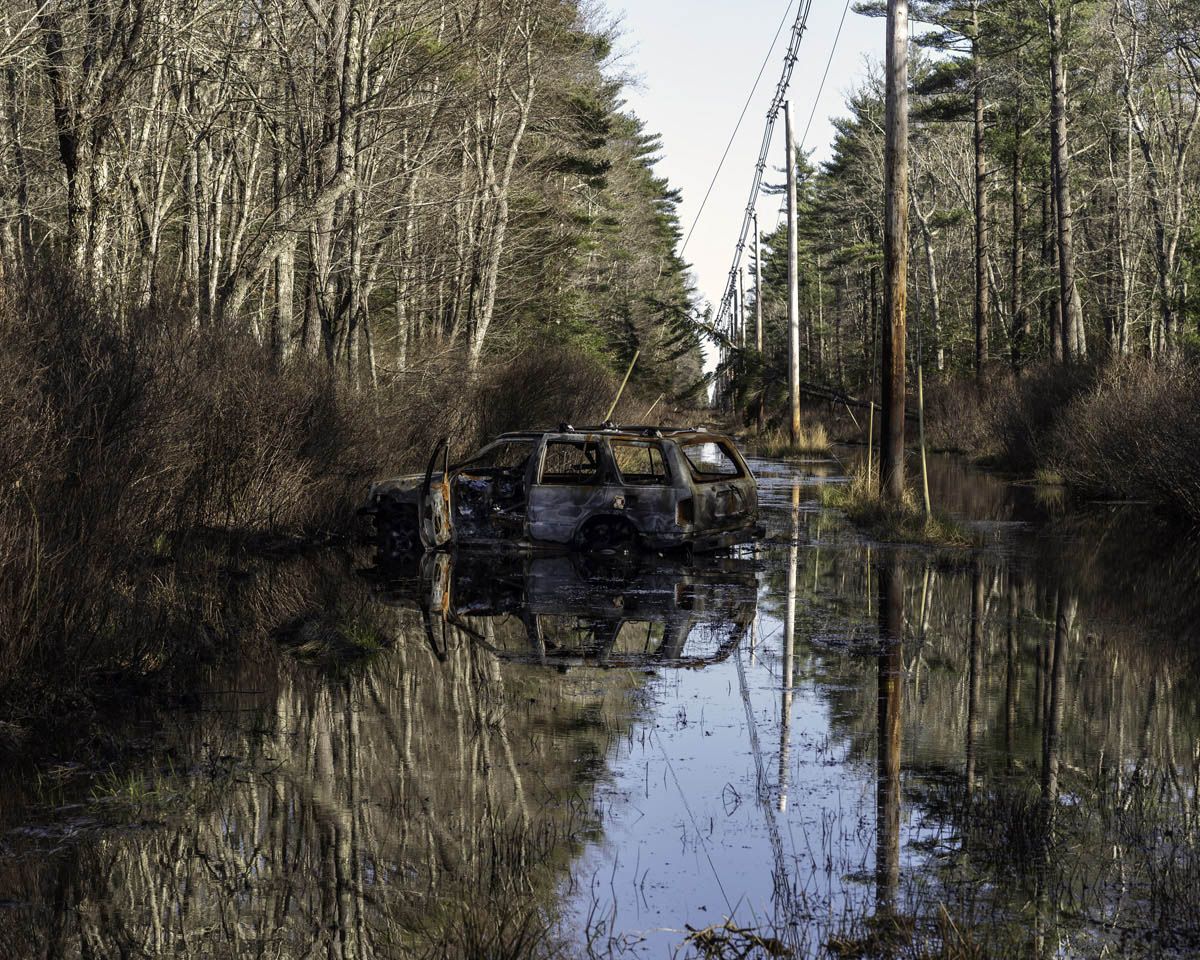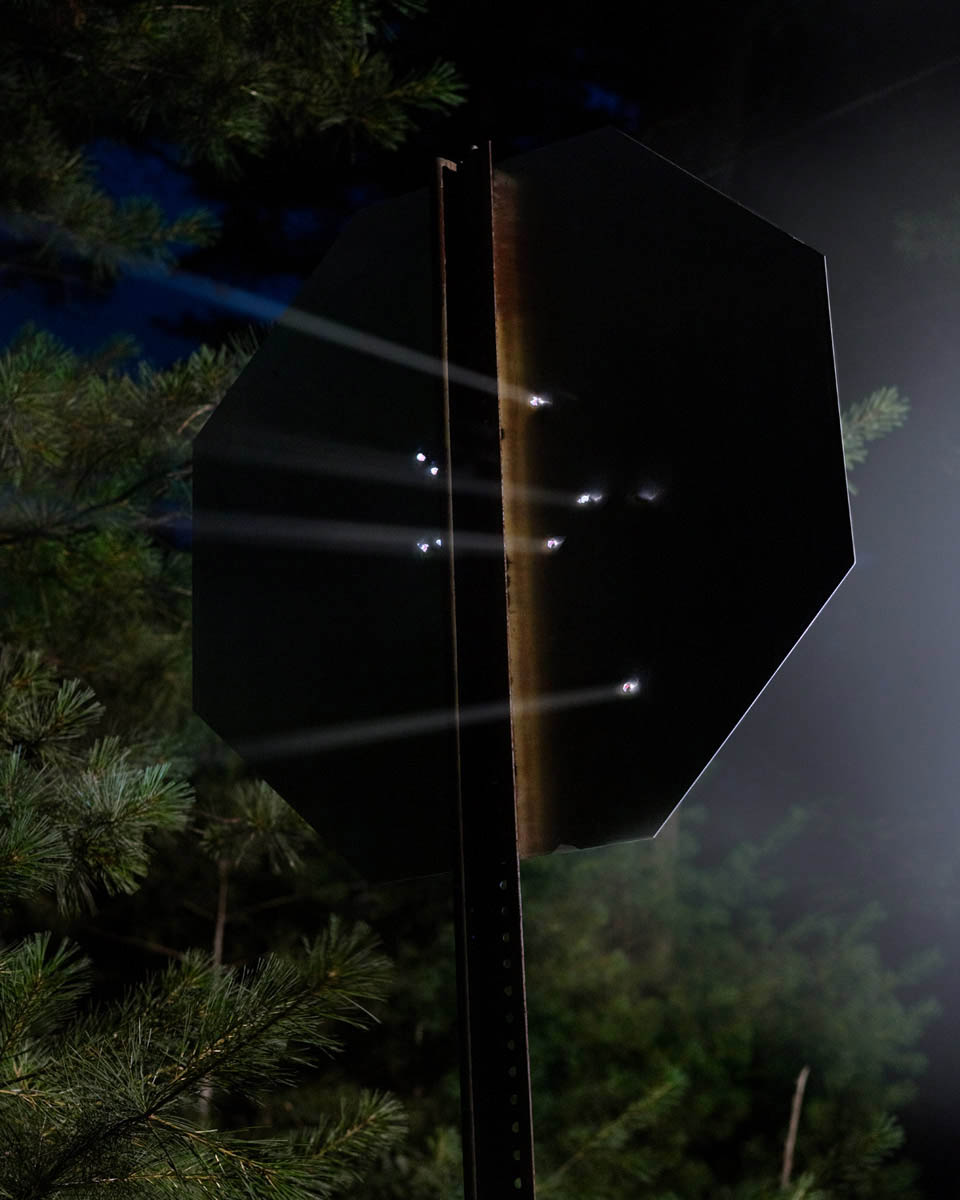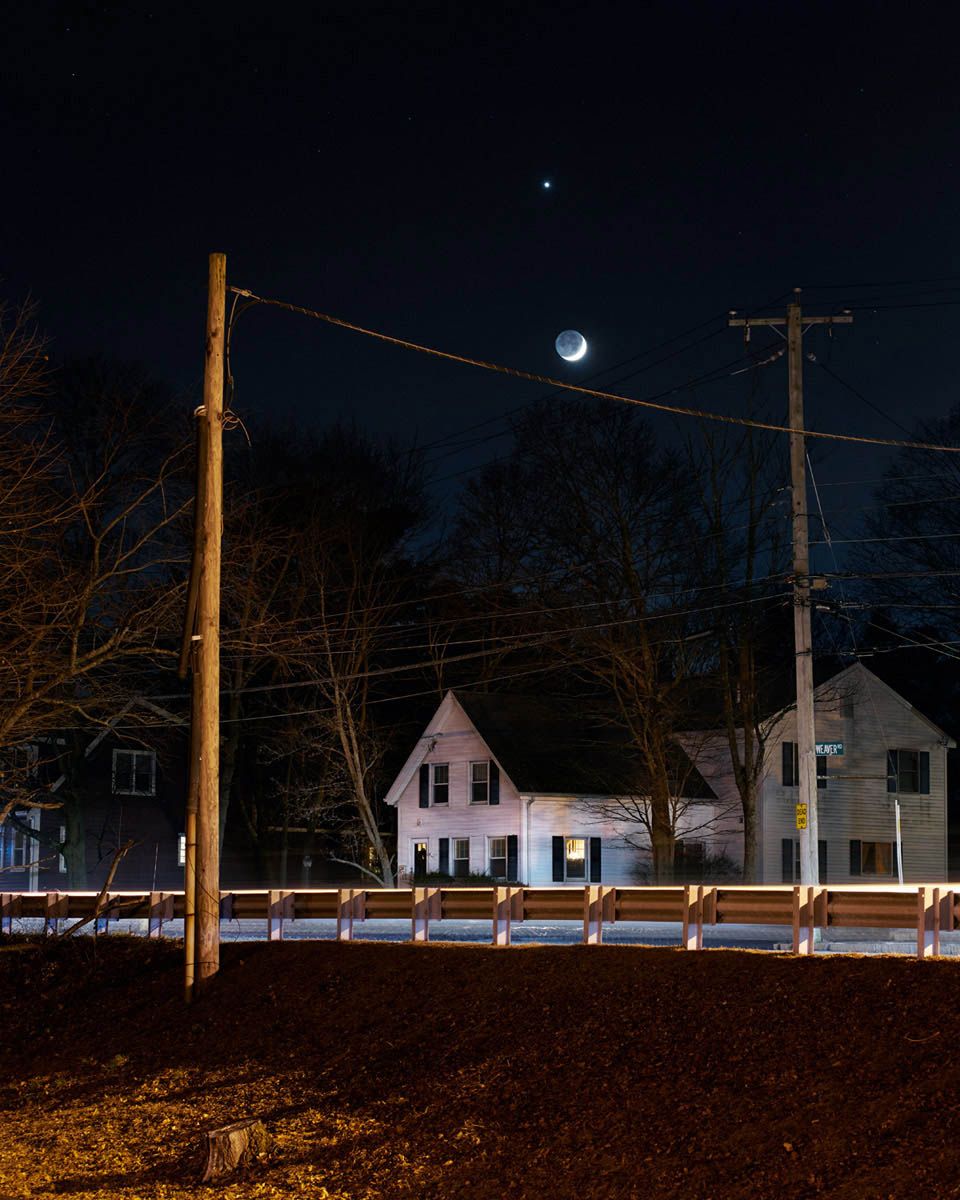blog
Interview with Featured Photographer Alexa Cushing

Burned Out Car, from ‘Devil’s Swamp’ © Alexa Cushing
Alexa Cushing’s portfolio, “Devil’s Swamp”, featured in Issue 122-Portfolio 2023 is an exploration of the ‘Bridgewater Triangle’ area of Massachusetts. The area is steeped in folklore and mythology, yet I was drawn to this work before I knew the backstory. The project has a strong vibe of visual storytelling that prompted me to connect the dots, infer connections, and simply wonder at the possibilities.
Cary Benbow (CB): Can you tell us a bit about yourself – does where you grew up and spent your formative years influence the way you work/create?
Alexa Cushing (AC): I grew up in southeastern Massachusetts, which has heavily influenced the work I create as my photographs are very location driven. My first creative projects were illustration based, where I often found myself drawing the surrounding suburban neighborhoods and exploring the different ways lighting/time of day affect mood and atmosphere. Eventually, I started using a camera to capture what I was trying to illustrate.
CB: What inspires your art? What kind of stories do you wish to tell?
AC: I am deeply inspired by the location in which I am working. I want my art to convey the feeling created by a place, rather than tell a linear narrative.
CB: Of the times you’ve shared or shown your work so far, what exhibition had the biggest impact on your career, or left a lasting impression?
AC: I would say the most impactful show of my career was when I exhibited Due West at Aviary Gallery. ‘Due West’ was a body of work I made right after graduating college, so it was the first time I was putting together a project and final exhibition on my own after four years of constant feedback and instruction from my peers and professors. I created the projected, edited, framed, and designed the exhibition independently, so it became a really great learning experience.

Bullet Holes, from ‘Devil’s Swamp’ © Alexa Cushing

Winter Moon, from ‘Devil’s Swamp’ © Alexa Cushing
CB: There are so many ways to express oneself in a 21st-century world. What makes photography your choice of expression?
AC: I feel the most artistically inspired when I see small moments in the real world that excite me. I love to be able to translate what I’m seeing, but maybe something that is not obvious to everyone, to share with others.
CB: Let’s talk about the ideas behind your work submitted to this issue compared to other projects of yours. How is ‘Due West’ similar or different to ‘Devil’s Swamp’ or ‘Seeing is Believing’… and why?
AC: Although all of my projects are different, I think they tie into each other pretty significantly. Even though ‘Due West’ is located across the country from Devil’s Swamp and ‘Seeing Is Believing’, they both use place as the main subject rather than people or anything else. Each project, instead of being a literal interpretation of a place, is a reflection of my feelings about the area. I am interested in exploring the perception I have of where I am, and introducing the idea of mystery to the viewer.
CB: Since your work in ‘Devil’s Swamp’ is specific to a certain place, your region in southeastern Massachusetts, is the work specific to that sense of place, or do you feel your work makes a comment on a broader level as well as the personal level?
AC: Although my project is very much focused on the Bridgewater Triangle region in southeastern Massachusetts, I think it absolutely makes a larger comment about human nature as a whole. Southeastern Massachusetts is made up of a majority working class and faith-based people. By bringing attention to this seemingly mundane area that has somehow become known as a supernatural hotspot, I hope to question why the people living here feel compelled to assign a larger than life meaning to their daily lives. Is this some sort of boredom, escapism, or quest to understand their world? Exploring these ideas has also allowed me to grapple with my own complicated relationships to religion and the idea of something greater than what we can see in our world.

Burnout, from ‘Devil’s Swamp’ © Alexa Cushing

Chicken Feathers, from ‘Devil’s Swamp’ © Alexa Cushing
CB: Who are your photography inspirations, and if those photographers have qualities that you admire or desire, how does it inform your own creative process?
AC: Two of my favorite photographers are Gregory Halpern and Alec Soth. Both artists handle the documentation of place really beautifully. They are able to convey the feeling of a location in a way I deeply admire. Similarly, I have always really loved the photobook Summer Nights, Walking by Robert Adams. Looking at those images, I can practically feel the air of a warm and sticky New England summer night. Friends from other areas of the US have told me they think of cool and dry summer nights. I love how those photos tie into individual memories instead of being really non-transferable.
CB: Do you feel comfortable categorizing your work in a certain way?
AC: I believe my work is more visual storytelling than documentary. Rather than documenting an area, I aim to use the location as a means to share a narrative or feeling. I am allowing myself many creative liberties to convey how a place personally makes me feel, rather than document something in a way that is more scientific and objective.
CB: What advice would you give to someone who wants to take on projects like yours?
AC: My main piece of advice would be to photograph freely and then edit down later. I find myself saying no to photos before I even make them, and I think that hinders me. That’s something I’ve been trying to work on lately.
::
To see more of Alexa Cushing’s work visit F-Stop’s Portfolio 2023 issue and – www.alexacushing.com
Location: Online Type: Featured Photographer, Interview
Events by Location
Post Categories
Tags
- Abstract
- Alternative process
- Architecture
- Artist Talk
- artistic residency
- Biennial
- Black and White
- Book Fair
- Car culture
- Charity
- Childhood
- Children
- Cities
- Collaboration
- Community
- Cyanotype
- Documentary
- Environment
- Event
- Exhibition
- Faith
- Family
- Fashion
- Festival
- Film Review
- Food
- Friendship
- FStop20th
- Gender
- Gun Culture
- Habitat
- Hom
- home
- journal
- Landscapes
- Lecture
- Love
- Masculinity
- Mental Health
- Migration
- Museums
- Music
- Nature
- Night
- nuclear
- p
- photographic residency
- Photomontage
- Plants
- Podcast
- Portraits
- Prairies
- Religion
- River
- Still Life
- Street Photography
- Tourism
- UFO
- Water
- Zine

Leave a Reply